The Apple iPhone XR Review: A Different Display Leads To Brilliant Battery Life
by Andrei Frumusanu on February 5, 2019 9:45 AM EST- Posted in
- Mobile
- Apple
- Smartphones
- iPhone XR
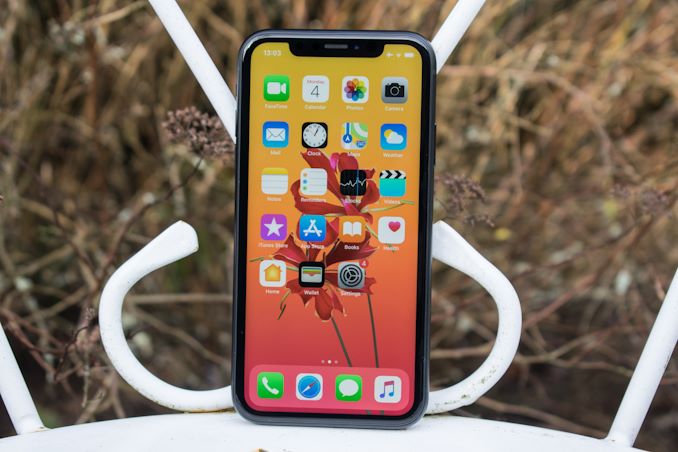
The latest generation of iPhones have been out for a couple of months now – we’ve extensively reviewed the iPhone XS and iPhone XS Max shortly after their official release. Missing in the review was the lower-tiered iPhone XR – the main reason for this being Apple deciding to release this variant a month after the original XS models had become available. Today, albeit a bit late, we finally got the chance to get our hands on a unit, and investigate some of the differentiating factors of the iPhone XR – such as the LCD screen and the phone’s overall battery life.
The iPhone XR is an interesting product for Apple: It is clear that it aims to be a lower-cost alternative to the higher-end XS flagships. Yet at the same time it’s not directly an alternative to either the XS or the XS Max, and rather represents a model that squarely fits in-between its two higher-priced siblings.
Back when I first laid my hands on the iPhone XR at Apple’s launch event, one of the things noted was that I believed the iPhone XR was going to become the most popular choice among Apple’s current smartphone generation. A couple of months later, and probably with some hindsight, it seems that Apple’s decision to not release the XR at the same time as the XS and XS Max might have actually shifted a lot of users to just jump on the higher-end models, rather than to wait.
Let’s see if the iPhone XR is still a good alternative to the new XS – and in particular let’s address the elephant in the room that is the display as well as battery life differences that are specific to the XR.
| Apple 2018 iPhone Specifications | ||||
| iPhone XR | iPhone XS | iPhone XS Max | ||
| SoC | Apple A12 Bionic 2 × Vortex @ 2.5GHz 4 × Tempest @ 1.59GHz |
|||
| GPU | 4-core "G11P" @ >~1.1GHz | |||
| DRAM | 3GB LPDDR4X | 4GB LPDDR4X | ||
| Display | 6.1-inch LCD 1792×828 DCI-P3/True Tone |
5.8-inch OLED 2436×1125 DCI-P3/True Tone 3D Touch |
6.5-inch OLED 2688×1242 DCI-P3/True Tone 3D Touch |
|
| Size | Height | 150.9 mm | 143.6 mm | 157.5 mm |
| Width | 75.7 mm | 70.9 mm | 77.4 mm | |
| Depth | 8.3 mm | 7.7 mm | 7.7 mm | |
| Weight | 194 grams | 177 grams | 208 grams | |
| Battery Capacity | 2942mAh / 11.16Wh | 2658mAh / 10.13Wh | 3174mAh / 12.08Wh | |
| Wireless Charging | Qi | |||
| Rear Cameras | 12 MP 1.4µm pixels, f/1.8, OIS Wide Color Gamut Quad LED True Tone Flash Portrait Mode, Portrait Lighting, Depth Control |
|||
| none | 12 MP f/2.4 Telephoto, OIS 2x Optical Zoom Portrait Mode, Portrait Lighting, Depth Control |
|||
| Front Camera | 7MP f/2.2 Wide Gamut, Retina Flash, Portrait Mode, Portrait Lighting, Depth Control |
|||
| Storage | 64 GB 128 GB 256 GB |
64 GB 256 GB 512 GB |
64 GB 256 GB 512 GB |
|
| I/O | Apple Lightning | |||
| Wireless (local) | 802.11ac Wi-Fi with 2x2 MIMO + Bluetooth 5.0 + NFC | |||
| Cellular | Intel XMM7560 Modem UE Category 12 LTE (600Mbps) |
Intel XMM7560 Modem UE Category 16 LTE (1Gbps) with 4x4 MIMO and LAA |
||
| Splash, Water, Dust Resistance | IP67 up to 1 meter, up to 30 minutes |
IP68 up to 2 meters, up to 30 minutes |
||
| Dual-SIM | nano-SIM + eSIM nano-SIM + nano-SIM (China model) |
|||
| Launch Price | 64 GB: $749 128 GB: $799 256 GB: $899 |
64 GB: $999 256 GB: $1149 512 GB: $1349 |
64 GB: $1099 256 GB: $1249 512 GB: $1449 |
|
Starting off with the specifications, the iPhone XR has very similar hardware to the iPhone XSes: At the heart all the models, we find Apple’s latest A12 SoC. The A12 made huge impressions by delivering some outstanding performance and power efficiency – showcasing some incredible figures that are near those posted by some of the best desktop PCs. An especially big leap in this generation was Apple’s new GPU, which combined with the new 7nm process node has made for some impressive improvements in terms of power efficiency.
In terms of differences in the internal hardware capabilities, the only high-level divergence to jump out is the fact that the iPhone XR comes with 1GB less DRAM than the 4GB XS variants. For general use-cases, I haven’t noticed a meaningful difference between the models in this regard and I don’t see it as an issue.
Other internal hardware difference that can’t be seen are on the connectivity side. The iPhone XR offers the same maximum cellular connectivity speeds as on the iPhone 8, with LTE speeds topping out at Category 12 rather than the Category 16 speeds the underlying modem is capable of. The reason for the change here is due to the lack of 4x4 MIMO on the iPhone XR – this difference can actually been seen externally, as the XR lacks the two new antenna segments that were introduced with the iPhone XSes.
From a design perspective, the iPhone XR’s back is a bit more similar to the iPhone 8 than it is the iPhone XS. The big change here from the iPhone XS models is the obvious lack of a second telephoto camera module. The main camera sensor is still the same 12MP module as found on the new XS – this means an improved and larger sensor with 1.4µm pixels, an f/1.8 aperture lens as well as OIS. Going into this review we weren't really expecting the iPhone XR's rear camera to perform any differently than the regular XS, and our camera testing has confirmed as much.
It's on the front of the phone where we find the most obvious differences relative to the XS models: The iPhone XR comes with a lower resolution LCD panel rather than the OLED displays employed by the XS. Over the last few months the LCD display on the XR has been quite a focal point of many discussions – mainly arguing about Apple’s choice of going with a quite lower pixel density than what we would have expected for a 2018 iPhone. We’ll be revisiting the display panel’s performance later in the article as we literally take a closer look at the panel as well as its calibration.
If for some users the difference between the LCD and OLED panels are hard to distinguish, another telling aspect of the iPhone XR over the XS models is its thicker bezels on all sides. When Apple launched the XR I was quite surprised at this design choice. The reasoning for it is that Apple wanted to keep a symmetric design on all sides – and with the LCD panel of the XR it seems that Apple wasn’t able to get a quite as thin a display controller lip as on the OLED panels of the iPhone X and XS. The difference is immediately visible and personally I don’t find it very endearing for the phone, as the new bezels are actually thicker than any past iPhone. The comparison to some recent Android phones is even less favourable for the XR, as some have side bezels of less than half the size, even those with LCD panels.
Another point of discussion is the size of the iPhone XR. The phone falls in the middle in terms of size, in-between the smaller XS and the bigger XS Max. Apple here had to find a balance to satisfy the majority of users while avoiding a total of four phone variants. I think the XR’s size falls in a very good middle-ground that is becoming more and more popular with handset vendors.
While the XR’s 75.7mm width is also within this “sweet-spot”, its in-hand feel does not directly match the experience that I’m accustomed to for phones of this form-factor. The reason for this is that the iPhone XR comes in at 8.3mm, around 8% thicker than the iPhone XS and XS Max. While this might not sound like much, on a subjective level I find that it make a big difference to me. And even though, for example, the XS Max is a wider phone at 77.4mm (above my preferred size), I do like it more than the XR, as I feel it to be easier to hold. It’s to be noted that Android phones similar in width to the XR are almost all more ergonomic to hold – this is due to sloped sides on the back essentially becoming a norm amongst most manufacturers.
Overall, I have mixed feelings about the design of the iPhone XR. On one hand, it’s absolutely something you can get used to, and there are users out there who subjectively prefer a symmetric bezel design over thinner side-bezels. The one thing that surprised me more than I anticipated is that I didn’t like the ergonomics of the XR as much. I feel that the phone would have at least benefitted from a lower weight – again here at 194g it’s very much on the heavier side of the scale compared to similarly-sized phones. With all of that said, the one design choice of the XR that I actually prefer is that it still has brushed aluminium sides as opposed to the polished/glossy steel on the XS models, this allows the XR to have notably better grip and is more akin to what we find in older iPhone models.


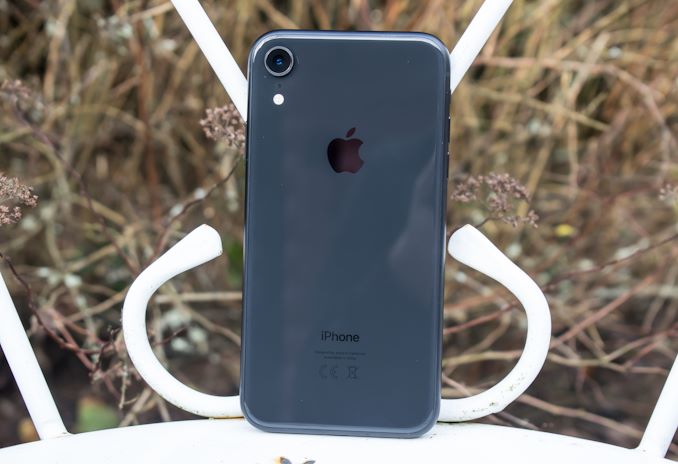
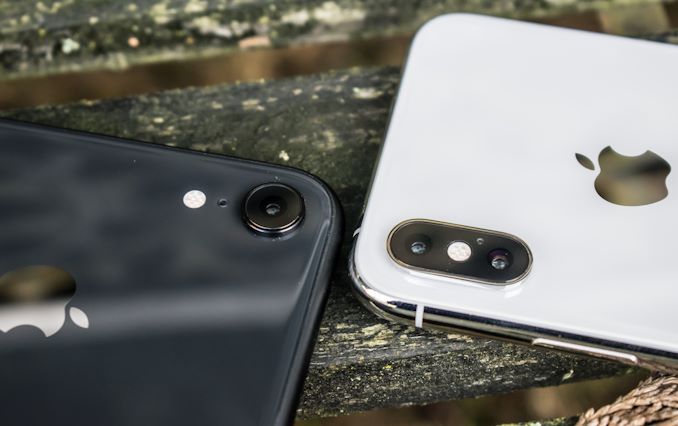
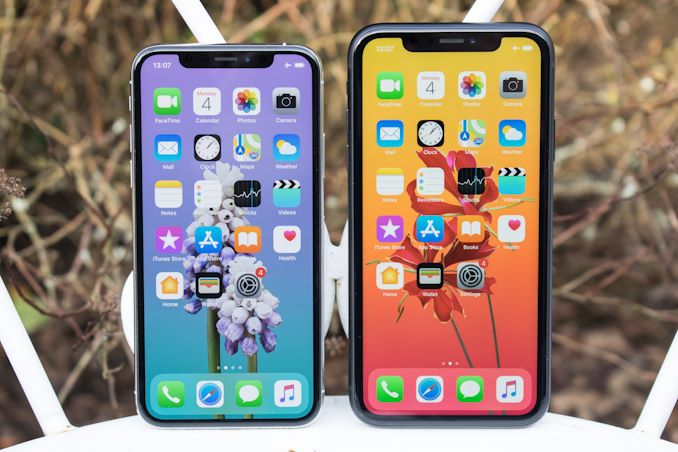
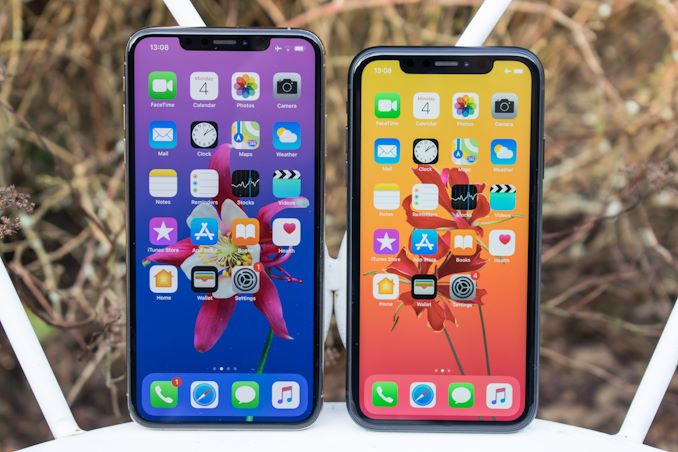
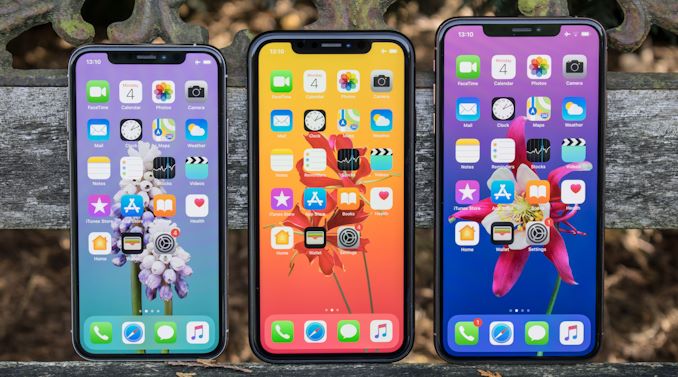









89 Comments
View All Comments
soliloquist - Tuesday, February 5, 2019 - link
From the charts, you are talking about 0.6 mm. Seems hard for me to believe that translates to "infinitely" more comfortable.Andrei Frumusanu - Tuesday, February 5, 2019 - link
As I mention in the review, it's not about absolute mm's, it's about the % difference. Take into account that what actually matters for in-hand feel is the edge thickness as well as the distance from edge to edge over the back. There is a very big difference in feel from the X/XS/XSM to the XR.eastcoast_pete - Wednesday, February 6, 2019 - link
While this is beyond the review of the phone itself, somebody else here pointed out that many buyers of such expensive phones will add a case to protect their investment. I certainly have a slim case around my (Android) phone. In that regard: Andrei, could you comment on drop resistance and likely damage? To be clear, I wouldn't expect you to actually try it out - not at those prices.peterfares - Tuesday, February 5, 2019 - link
0.6mm of extra thickness makes it too thick? I'm not sure I'd even be able to notice that.colinstu - Tuesday, February 5, 2019 - link
Man if I could get the XS Max with the XR's screen & price tag I'd be happy.sing_electric - Tuesday, February 5, 2019 - link
I still think that your initial guess - that the XR would be the best-selling model - will turn out to be true. Although launch dates/quarters of iPhones certainly bring a sales bump, the VAST majority of users out there just walk into a store when they've paid off their old phone, or it's starting to die, or they just feel like it's time, not caring whether the model launched a day ago or 6 months ago.Those people will buy the phone that looks like an iPhone and suits their budget - and that's going to be the XR. Moreover, by putting the XR in the MIDDLE size-wise, people who prefer bigger phones (which, based on people I've seen, includes a lot of older people with so-so vision, who wouldn't care about resolution), customers who walk in with say, an iPhone 7 Plus will look at the XR and not feel that it's a "step down" in terms of size, meaning that the XR is likely going to be an upgrade path for both budget-conscious owners of 4.7" iPhones AND the larger 5.5" Plus models.
howieb2001 - Tuesday, February 5, 2019 - link
My wife has my XS Max as I prefer the XR. Couldn't care less about bezels, benchmarks and the like. This phone does everything very smoothly and has fantastic battery life. You can hammer it mercilessly for an 18 hour day and you won't get anywhere near to draining it. The camera is close to Pixel 3 standards. Great phone.rrinker - Tuesday, February 5, 2019 - link
I'm still using a 5S (go ahead, laugh, but it works perfectly fine, battery still lasts me all day, nothing wrong with it). All this talk of display and bezels - really? Panning a slight bezel is the whole reason we're in these stupid crazy phone wars in the first place. I'm an engineer, not a designer - I don't give a hoot as long as it works. In fact, the wider bezels just makes it easier to hold the phone without accidentally touching the screen and making pages flip or something else happen that you don't want. The screen density on the XR is exactly the same as my 5S. Close up - without magnification, I can't see the pixels. It's PLENTY sharp enough. A special zoom camera? My 5S already gets better photos at concerts than my GF's Samsung, which is also a WAY too huge a phone to hold to boot. The XR is probably still too big but there's not a lot of options these days. I have a tablet for reading, I don;t need my phone to be tablet size to make a damn phone call and occasionally web browse or read emails while on the go. The real question is, why WOULDN'T I get the XR as an upgrade, over the others. The others don't really do anything better for the extra money, and frankly I've never been a big fan of OLED displays. 4 year life span? See my first sentence. I keep using things until they break beyond economical repair. I'd still be on my old iPad if I hadn;t fallen asleep while reading on the patio last Summer and dropped it, it was the first one that had a lightning connector, still worked fine and did what I need a tablet to do, no reason for an upgrade just for the sake up upgrading. XR seems to be my best choice to upgrade if I bother - really can;t see a compelling reason to stop using the 5S yet though.ZeroPointEF - Tuesday, February 5, 2019 - link
I agree. I was in the market for a new phone, and picked up an XR for US$375. It is one of the best decisions I have made. I get 3 to 4 days out of a single battery charge, the screen is fantastic, and it is comfortable to hold. For someone that had nothing but disdain for iPhone, the changes that they made for the X series were just right for me to embrace the device. Android was always a sad comparison to my Windows Phone devices, but now I am firmly entrenched in the iOS and iPhone camp. If the XR still had a home button and didn't have the notch, I am not sure that the experience would have been as wonderful as it has been.cha0z_ - Monday, February 11, 2019 - link
375$ for that phone is more than a great price.